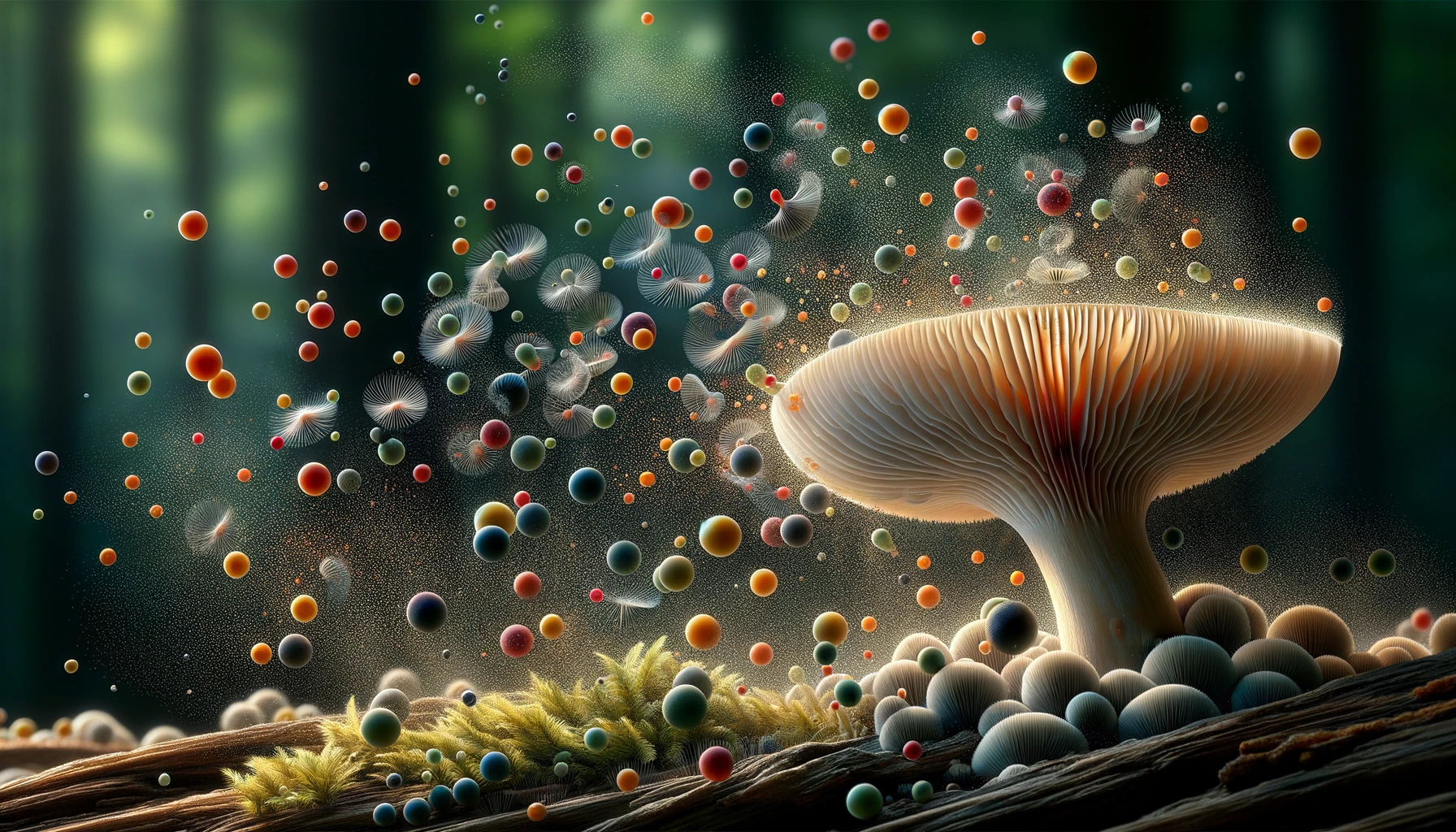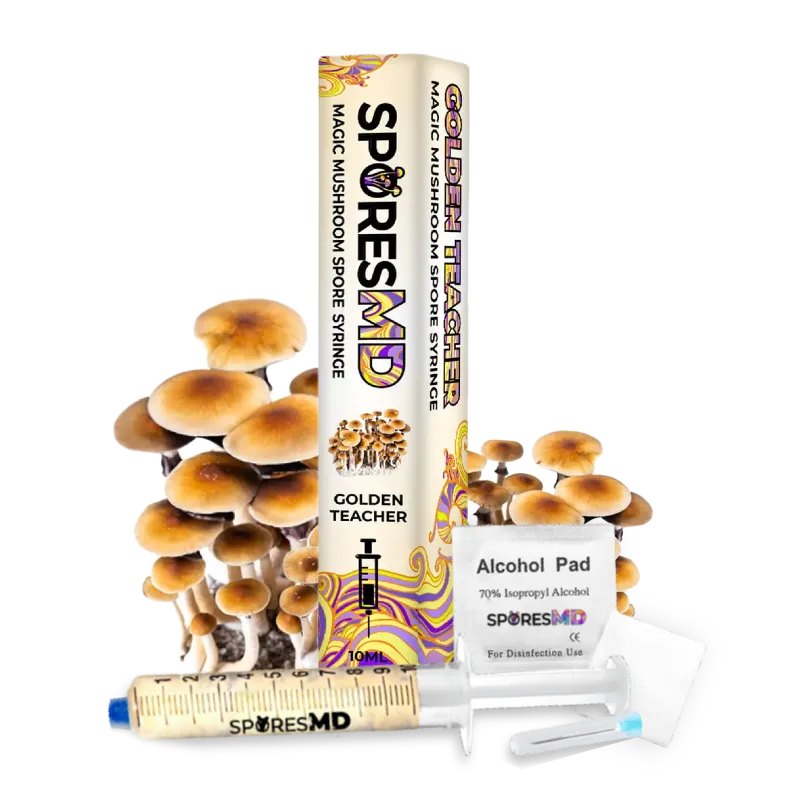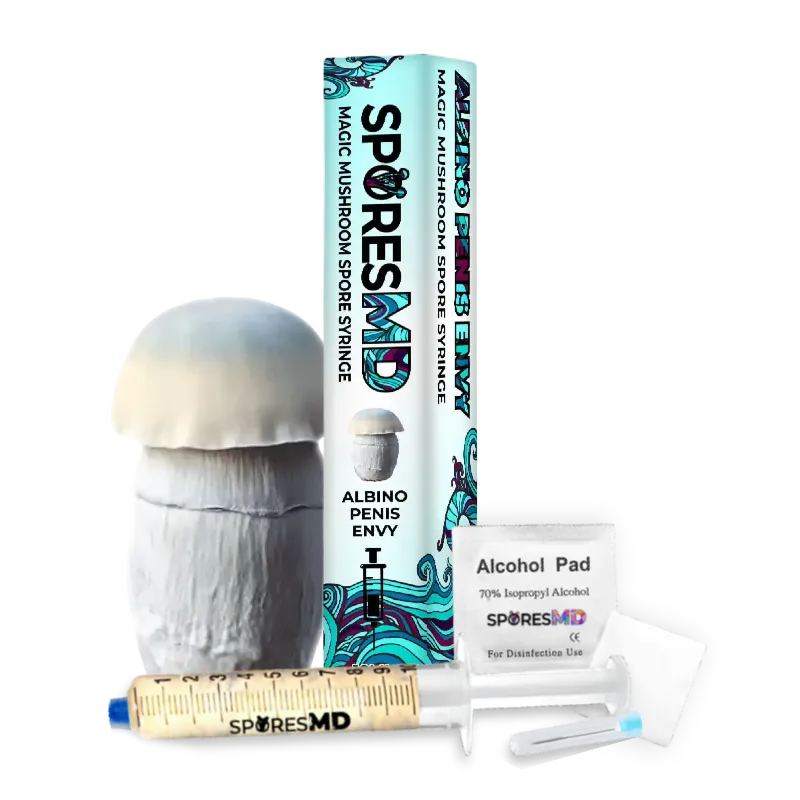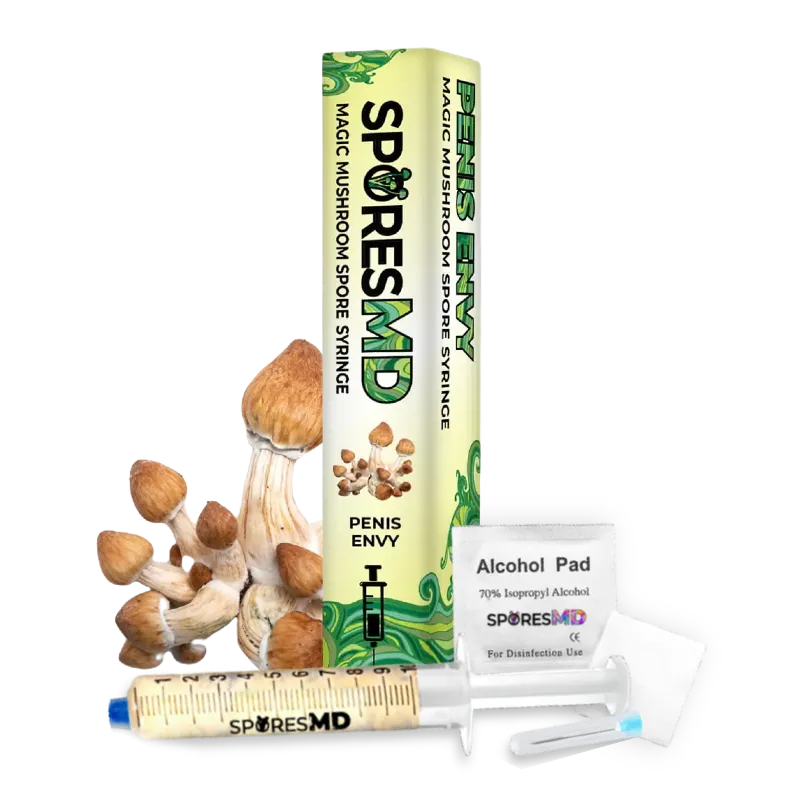Mushroom spores are tiny. They come in various colors. You might find white, black, brown, or even pink spores. Each type has its own unique shape and size.
To truly see their beauty, you need a spore print. This is a pattern made by thousands of spores dropping onto a surface. It’s like nature’s own artwork.
Whether you’re a forager or an artist, understanding what mushroom spores look like is fascinating. With a closer look, you’ll uncover a hidden world of intricate designs and vibrant hues.
Key Takeaways
- Mushroom spores are microscopic reproductive units that come in various colors and shapes, essential for fungal growth and dispersal.
- Spore prints reveal unique patterns which help in identifying different mushroom species, showcasing the intricate designs and colors of spores.
- Spores play a crucial role in the mushroom life cycle, facilitating reproduction and the formation of new fungal networks (mycelium) that contribute to the ecological cycle.
- Mushroom spores are important in cultivation and identification; mushroom spore syringes and spore prints are practical tools for mushroom growers and mycologists.
- Handling mushroom spores safely is essential, as high concentrations can cause respiratory issues for individuals with allergies or pre-existing conditions. Proper precautions can mitigate these risks.
Understanding Mushroom Spores
What Are Mushroom Spores?
Mushroom spores are tiny reproductive units of fungi. They carry genetic information essential for fungal growth. Spores fall off the gills of mature mushrooms and remain dormant until conditions favor germination. Millions of these microscopic structures disperse via wind, water, insects, or animals.
Curious to explore more? Discover mushroom spores and delve into their fascinating world.
Varieties and Their Appearances
Mushroom spores come in several colors, shapes, and sizes:
- Colors: White, black, brown, pink
- Shapes: Elliptical, spherical, cylindrical
- Sizes: Typically 4-20 micrometers in diameter
Creating a spore print reveals the unique patterns and colors of these spores, providing a beautiful and intricate glimpse into nature’s art.
Patterns from spore prints can help in identifying different mushroom species. For example:
| Mushroom Type | Spore Color |
|---|---|
| Oyster Mushroom | White |
| Portobello | Dark Brown |
| Shiitake | White |
Unique and beautiful, these prints are fragile and must be handled carefully to avoid smudging.
Learn how to make your own spore prints with a step-by-step guide. Explore the delicate beauty of mushroom spores and appreciate their role in the ecological cycle.
Experiment with collecting spore prints at home and watch as each unique pattern unfolds. Enjoy the captivating artistry and essential functionality of mushroom spores.
The Role of Spores in Mushroom Life Cycle
How Spores Facilitate Reproduction
Spores are critical to the reproduction of fungi. They contain genetic material necessary for the growth of new mushrooms. When released, spores travel through the air, water, or by attaching to animals. Once they land in a suitable environment, they germinate and develop into new fungal networks called mycelium.
Here’s a closer look at the process:
- Release: Mushrooms release billions of spores. For example, a single mushroom can produce billions of spores daily.
- Dispersal: Spores drift through the air. Spores are microscopic, measuring about 2 to 5 micrometers in length.
- Germination: When conditions are right, spores germinate, developing into mycelium. This network supports the growth of new mushrooms.
Spores aren’t just for reproduction. They also help identify mushroom species. Spore prints, which you can create at home, reveal the colors and patterns unique to each type of mushroom.
Visual Representation
Here’s a simple table to illustrate the role of spores in the mushroom life cycle:
| Stage | Description |
|---|---|
| Release | Spores released into the air by mature mushrooms. |
| Dispersal | Spores carried by wind, water, or animals. |
| Germination | Spores germinate in a conducive environment, leading to mycelium formation. |
| Growth | Mycelium develops into a new mushroom, complete with gills for further spore release. |
Understanding the life cycle of mushrooms emphasizes their ecological significance. Spores play a crucial role in spreading fungi, which in turn helps decompose organic matter and recycle nutrients.
Visual Characteristics of Mushroom Spores
Colors and Patterns
Mushroom spores display a variety of colors and patterns. The colors range from white and yellow to brown, purple, and black. For example, Cortinarius species produce brown spores, while Panaeolus have black spores. The patterns formed by spores on a surface can appear as solid deposits or more intricate designs, depending on the species and method of deposition.
Spore-Producing Structures: Gills, Pores, and Teeth
Mushrooms use specific structures to produce and release spores. These include gills, pores, and teeth.
- Gills:
- Thin, blade-like projections under the cap
- Common in species like Agaricus bisporus (white button mushroom)
- Pores:
- Small openings, sponge-like texture
- Seen in boletes and polypores
- Teeth:
- Spiky projections hanging beneath the cap
- Found in mushrooms like lion’s mane and hedgehog mushrooms
These structures contribute to the identification of mushroom species and their unique spore dispersal methods.
Practical Uses of Mushroom Spores
Mushroom Cultivation
Mushroom spores play a critical role in cultivation. They serve as the starting point for growing various types of mushrooms. Using spore syringes filled with sterile water and spores simplifies the process. Combining spores with a nutrient-rich substrate, like brown rice flour and vermiculite, initiates the growth process.
Sterility is paramount to avoid contamination. Even tiny amounts of bacteria or mold can ruin your cultivation efforts. Many growers purchase ready-to-use spore kits to ensure a clean start. Check out SporesMD for high-quality mushroom spore syringes.
Spore Prints for Identification
Spore prints help identify mushroom species. To make one, place a fresh mushroom cap on paper, cover it, and let the spores drop. Different species have unique spore colors, such as black, brown, white, or yellow, aiding in accurate identification.
Using spore prints, with the aid of a microscope, allows detailed examination of spore shapes and sizes, crucial for distinguishing between species. This method is especially useful for mycologists and mushroom foragers.
Creating spore prints at home is straightforward yet requires careful handling. Even minor airflow can disrupt the spores.
- Cultivating Mushrooms: Ensures a clean and efficient start.
- Identifying Species: Spore color and structure offer vital clues.
Safety and Myths About Mushroom Spores
Health Implications
Mushroom spores, though essential for reproduction, might present health risks in high concentrations. Spores are tiny—ranging from 2 to 5 micrometers—and can become airborne, causing respiratory issues. People with allergies or respiratory conditions like asthma might experience exacerbated symptoms.
- Spores in the Air: Billions of spores released daily can contribute to indoor and outdoor air quality challenges.
- Allergenic Responses: Sneezing, coughing, and itchy eyes indicate potential fungal spore allergies.
Using appropriate protective gear like masks can mitigate exposure risks during cultivation or identification activities.
Common Misconceptions and Myths
Several myths surround mushroom spores:
- Myth: Mushroom spores are visible to the naked eye.
- Fact: Individual spores can’t be seen without a microscope. They appear like dust only in large quantities.
- Myth: Spores are harmful to the environment.
- Fact: Spores play a crucial role in decomposing organic matter and recycling nutrients.
- Myth: Handling spores is always unsafe.
- Fact: Proper sterilization and precautions ensure safe handling.
- Massive Production: An individual mushroom can release billions of spores daily. Collectively, mushrooms release approximately 50 million tons of spores annually.
- Weather Impact: Researchers found spores can attract water droplets, aiding cloud formation and potentially influencing weather patterns.
Understanding these points helps differentiate between factual information and common myths.
By addressing both the health implications and prevailing myths, you gain a comprehensive view of mushroom spore handling and safety.
Conclusion
Understanding what mushroom spores look like and their role in the ecosystem helps you appreciate their complex life cycle and ecological significance. Proper handling and safety measures are crucial to avoid health risks, especially respiratory issues. By debunking myths and providing accurate information, you can confidently engage in mushroom cultivation or simply enjoy observing these fascinating organisms. For more detailed guidance and resources, head over to SporesMD.





